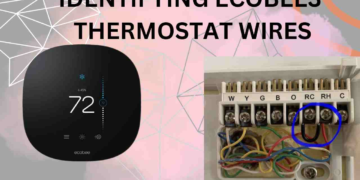You will undoubtedly need to know how to read a tape measure no matter what project you are working on, from hanging a picture frame to constructing a new deck.
The idea is really straightforward, however, it might get a bit perplexing if you start utilizing eighths and sixteenths!
I’m absolutely guilty of transferring measurements fast with the same tape measure by interpreting them as “one tick beyond the half inch” or “one line before 11,”.
But that might read differently on someone else’s!
This lesson will show you how to read a tape measure accurately markings and provide you with advice on how to take measurements that are always precise.
How To Read A Tape Measure In Centimeters OR Inches?
How do you make sense of all the lines on your measuring tape if you need to take a rapid measurement?
Once you grasp the lines on your tape measure, it’s quite simple to figure out how to interpret your measurement.
The lines on your tape measure make it simpler to acquire an exact reading. To help you precisely determine the size of any item, we’ll explain what each line on your sellotape measure means.
Recommended: Do You Tip Roofers?
Things To Be Aware Of
- To measure inches in imperial units, use the longest markers. For 12 inches, use the next longest line, for 14 inches, the third longest, and so on.
- Measure centimeters using the markers that are the longest for metric units. To get the length in millimeters, use each of the smaller markings.
- Your measuring tape should be extended across the item. Add the length from the smaller markers to the closest complete measurement.
Feet And Inches

1. Locate The Longest, Numbered Lines
To measure complete inches, locate the longest, numbered lines. Look for the long, thin lines on your measuring tape that have big numbers next to them.
The distance between each line of the same size is always one inch.
Because 1 foot equals 12 inches, the number on the tape may be marked with an “F” or a different color to indicate length.
The numbers adjacent to each inch mark will either repeat from 1 to 11 after each foot marking or continue counting to 13, 14, 15, and so on. Be careful you verify your sellotape measure since they all differ.
2. To Measure 12-Inch, Use The Second-Longest Markings

To measure in 12-inch increments, use the second-longest markings. Locate the 12-inch point in the middle of the long lines designating complete inches.
Even though the line may have “12” written just above it, if the only lines that are higher than it is the inch markings, you can know that it is the 12-inch mark.
Always add the full inch that came just before it to the measurement, unless it is the initial 12-inch point on your sellotape measure.
For instance, even though it isn’t labeled, the half-inch point between the 3- and 4-inch lines corresponds to 3 12 inches.
3. The Third-Longest Line

The third-longest line represents 14-inch increments. Between the 12-inch and full-inch lines, locate the 14-inch markers.
These markers are thinner (and sometimes shorter) than 12-inch lines so you can quickly and readily reference the measurement.
Inches are divided into 4 14-inch halves. The 12-inch line and the 2/4-inch mark are identical.
4. Eight 1/8-Inch Increments

To identify 1/8-inch increments, look at the fourth longest line. Look for the 18-inch marks that are situated in the middle of each 14-inch line.
Eight 1/8-inch increments are included in each inch, however, the lines are often not numbered.
The markings for 14-inch, 12-inch, and 34-inch may also be read as 2/8 inch, 4/8 inch, and 6/8 inch.
5. Measure Aixteenths Of An Inch

Use the tiniest, most closely spaced lines to measure sixteenths of an inch. Each line that is even shorter than the 1/8-inch markers indicates 1/16 of an inch.
Ensure that the 1/16-inch markers are located exactly between the 1/8-inch lines. There are several precision measuring tapes that feature markers for 1/32″ or even 1/64″.
If you’re unsure how far it’s subdivided, count the total number of lines between the inch markers. For instance, the smallest mark is 1/16-inch if there are a total of 16 markings.
6. See Double Arrows And Diamonds
For information on stud and truss spacing, see double arrows and diamonds. Check for a pair of two arrows every 16 inches with your sellotape measure extended.
This is the typical distance between wall studs, so you may just stretch the whole tape and note where each one is located.
You may simply use them as a guide to determine the usual positions to build roof trusses if there is a black diamond every 19.2 inches.
All of these markers are unnecessary if you are not measuring for roofing or wall studs, so don’t bother about them.
Recommended: Do You Tip A Locksmith?
Meters And Centimeters
1. Calculate Centimeters

Use the longest-numbered markers to calculate centimeters. Find the most noticeable marks that have big numbers next to them.
Every 10 cm, the color of the number could change so you can quickly identify the length you’re measuring.
To indicate 1 meter in length, the number may be colored differently every 100 cm or marked with an “M.”
The centimeter markers may begin counting anew at 1 after each meter or may go on to 101, 102, and so on. From measuring tape to measuring tape, this varies.
2. Measure In Half-Centimeter

To measure in half-centimeter increments, use the second-longest lines.
There are often slightly shorter markers that are uniformly placed between each centimeter line on metric measuring tapes. Often, these markings do not include a number.
Since the metric system is in base ten, working with decimals is significantly simpler than working with fractions in imperial measures. Instead of 12 centimeters, type down 0.5 centimeters.
3. Measure Millimeter

Take measurements using the tiniest, most compact marks. One-tenth of a centimeter, or 0.1 cm, is represented by one millimeter. There are 10 millimeters in every centimeter.
Units smaller than millimeters are seldom seen on metric tape measures because they are difficult to measure accurately.
Recommended: Do You Tip Window Installers?
Performing Measurements
1. Put The Hook Of The Measuring Tape
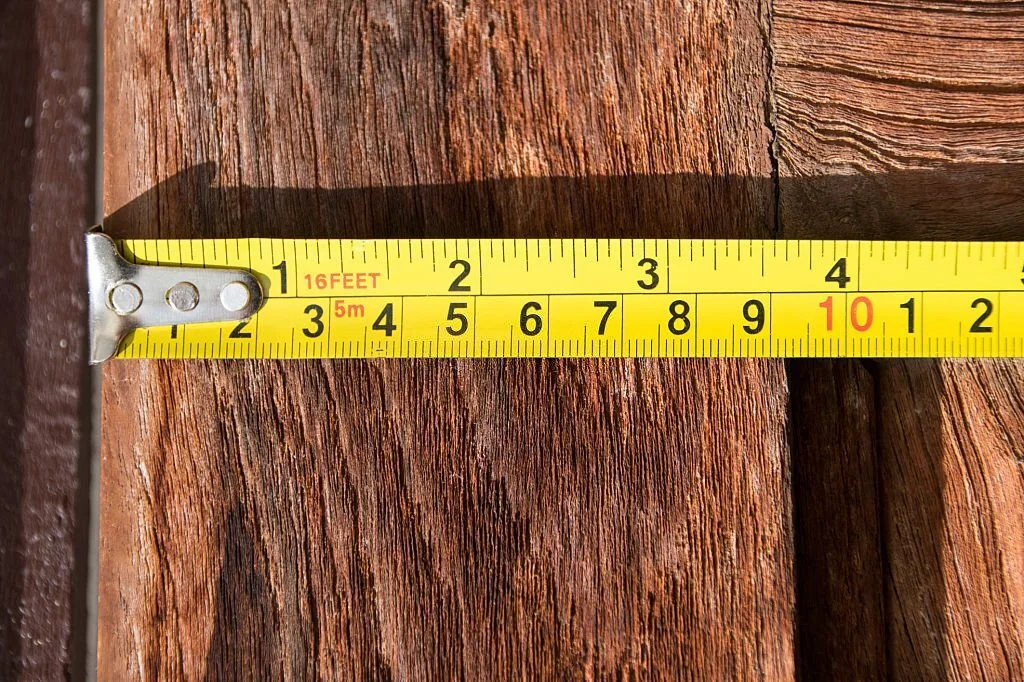
Put the hook of the measuring tape at the end of the thing you’re measuring. To prevent slipping, secure the metal piece at the measuring tape’s end to the edge of the item.
Instead, place the metal hook flat against the surface if you’re measuring an interior distance, such as the distance across a door frame or from one wall to another.
The “tang” is another name for the hook.
Is the metal hook loose to the touch? It’s intended to! The hook slides out when you latch it onto anything, so you can’t measure its breadth.
The hook presses flat against the tape when you measure within an item, so the width has no effect on your measurement.
2. The Tape Should Be Extended

The tape should be extended across the item. Pull the tape measure back to allow additional tape out while keeping the hook and 0 mark in place at one end of the item.
Stretch the tape all the way out while holding the end in place with one hand.
- Although letting the tape droop will bias your measurement, try to maintain it as straight as you can.
- To prevent the hole end of your sellotape measure from sliding, hook it onto a screw or nail.
3. Read The Closest Mark
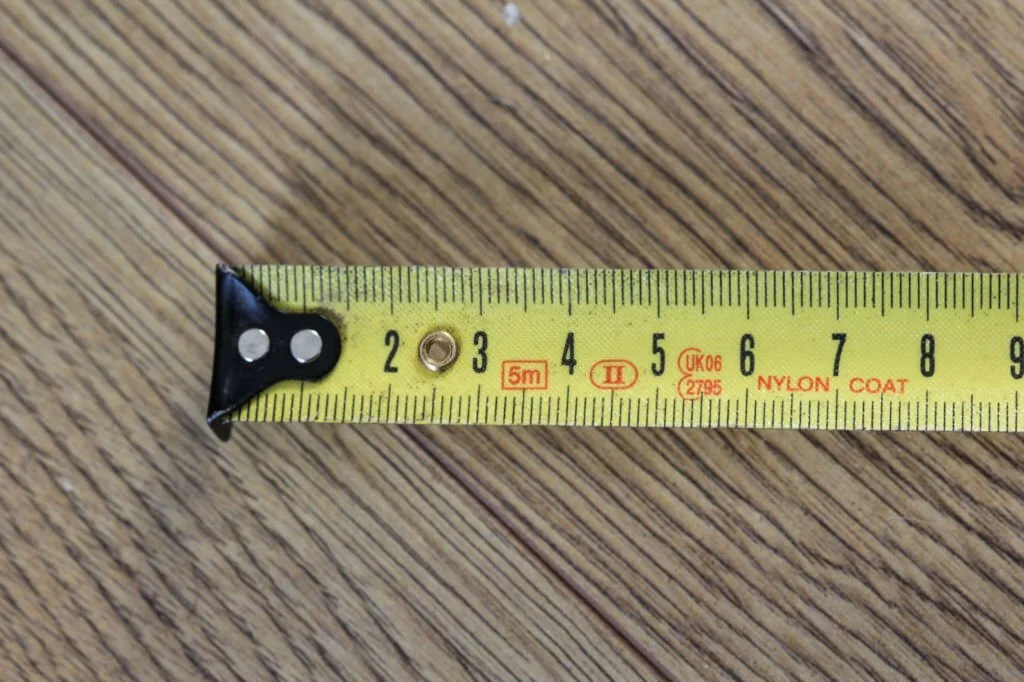
To determine the measurement, read the closest mark. Check to see if the measuring object’s end corresponds to a marking on the tape.
Locate the tape’s last accurate inch or centimeter mark. Then, add up the markings between the end of the item and the full unit on the tape to get the whole measurement.
Using a dresser as an example, if you measure across the front and the edge falls just after the 24-inch marker, your furniture is between 24 and 25 inches broad.
Your dresser is 24 3/8 inches wide if you add three 1/8-inch markings after 24 inches.
As in the case of measuring a piece of wood. The wood’s edge reaches over 17 centimeters but stops short of 18 cm.
The length of the piece of wood is 18.7 cm if you add up the 7-millimeter markings that follow the centimeter line.
4. Use The Lock Switch
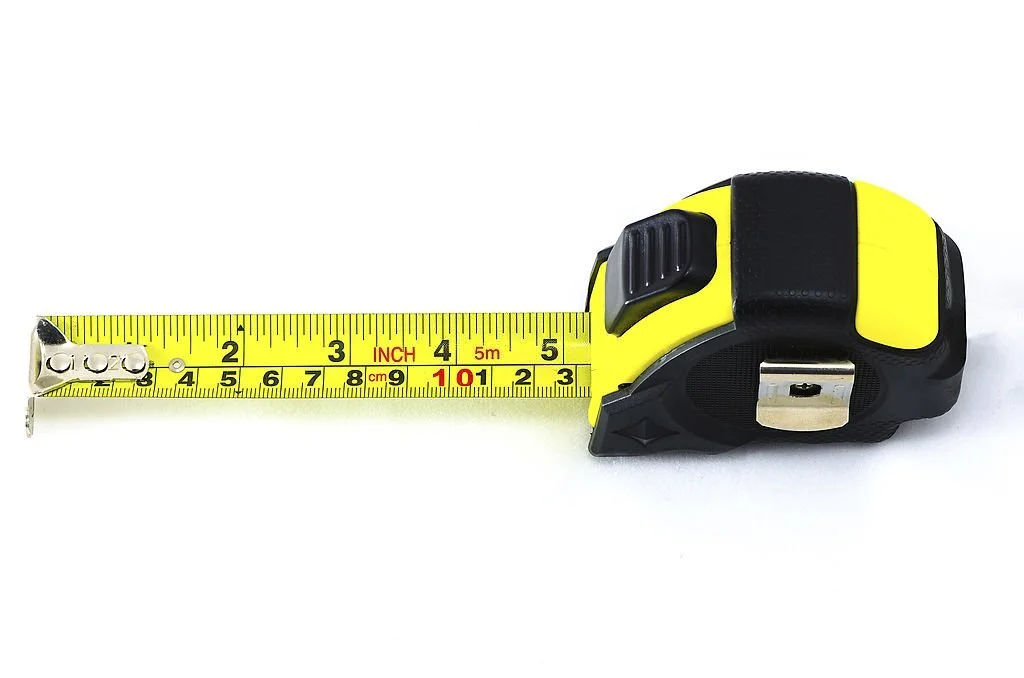
To maintain the tape’s length, use the lock switch. To prevent the tape from retracting if you need to compare or transfer your measurement, move the lock switch forward.
Pull the lock switch back to feed the sellotape into the casing after you are done using the measurement. The lock feature is advantageous.
- Quickly determining the larger of two things
- Checking to see whether something will fit through a certain opening.
- Having the tape on hand for a variety of fast measures.
- Maintaining a certain distance “handy” to prevent having to remeasure
Tape Measure Components
Every tape measure is made up of a few crucial components, and understanding how they function can make it simpler to use!
1. A Tape
While taking a measurement, you take out a long metal strip called tape. It is curved such that when it is stretched out, it becomes hard.

The tape’s ability to span a distance without bending stands out. If you’ve ever tried to measure the length of a room and the tape fell after a few feet, your tape was probably thin and had poor standout.
2. A Lock
The lock is a button or sliding switch located on the front of the sellotape measure. A spring that the tape is wound around causes it to automatically draw back.

Yet if you’re attempting to measure anything precisely, this might be irritating!
The lock will be useful in this situation. To fasten the tape so that it does not retract, just flick the switch.
If you tug on the tape while it is locked, the lock will ultimately cease functioning. Be careful not to do this. Why do I know that?
3. Belted Clip
You’ll notice another useful innovation on the side of your tape measure: a springy clip that enables you to hang it from your belt or apron pocket.
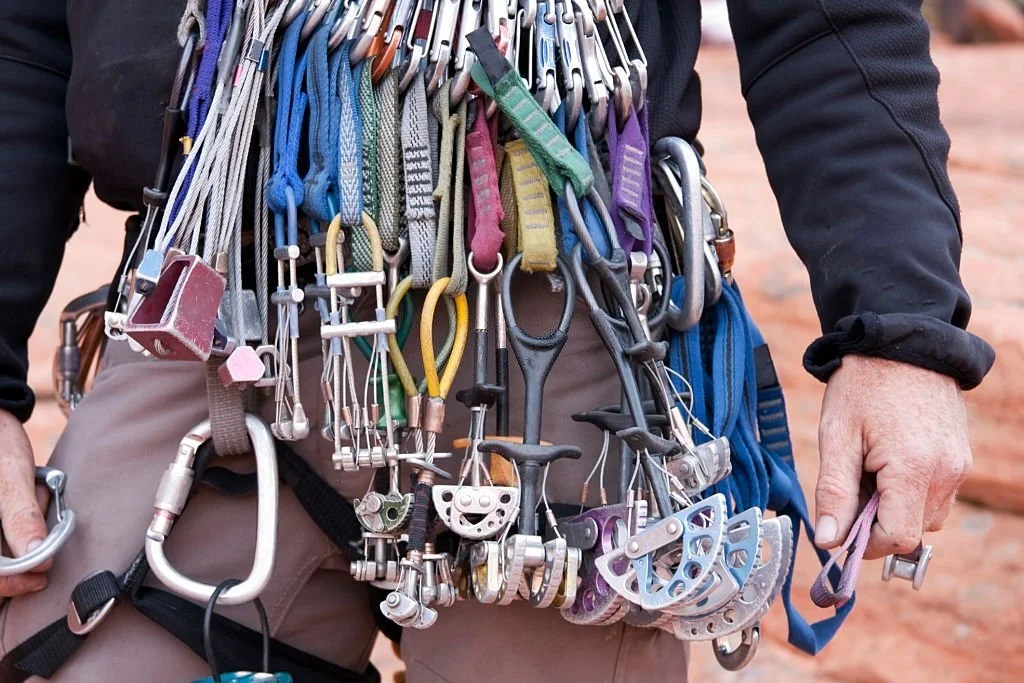
There may be a little metal tab on the exterior of your tool bag that is designed to accommodate the clip on your sellotape measure if you have one.
4. Tabbed Hook
Another little metal tab is attached to the tape’s end. It prevents the sellotape from retracting all the way into the housing, which is the first purpose of this.

Second, it eliminates the need for you to keep the measuring tape in place at both ends by giving you something to hook over the end of the object you are measuring.
The metal tab on your first tape measure could seem a bit loose, leading you to believe there is a problem.
Yet, this was planned! Depending on how you measure, this tiny amount of play makes up for the thickness of the tab.
When you push the tab up against a surface to take an internal measurement, the tab glides in. In this manner, the measurement won’t be distorted by the tab’s thickness.
The tab is pushed out when you hook it over an edge to take an outside measurement so that the measurement may begin from the inner edge of the tab that is really in contact with the board.
What Does Tape Measure Markings Mean?
It might be a bit frightening at first to read a tape measure. There are several little marks on your tape, and they all have various meanings.
1. Lines
The lines on the tape serve as the primary markers. There are several sizes, and each line’s width reflects the size of the measurement it denotes. Hence, the measuring section is larger the wider the line is.

The biggest lines are the inches, the 12″ line is midway between the inches on each side, and the 14″ line is halfway between those two, and you can split that measurement again to get the 18″ markings.
The 1/16″ and 1/32″ are much smaller, but if I need one of them, I generally simply start counting individual lines!
This is a simple illustration that displays the fractions for the sellotape measure. You can see that the metric system and millimeters are much simpler to comprehend in contrast!
Although most tape measures only display lines for fractions of an inch and greater, the one seen above goes down to the 1/32nd.
Measure yours by counting the lines between one and two inches if you’re unsure ” (including the 2″ mark). 16 lines have a 1/16″ spacing, whereas 32 have a 1/32″ spacing. 8 lines = ⅛ “spacing.
For instance, if you need to locate 58 “Imagine the inch on this tape measure is split into eight equal parts. As 12″ is equal to 4/8″, check for the next 18″ mark to get 5/8”.
You may get a tape measure with the fractions written out on it if you truly struggle to read them. I often use this one in my workshop.
2. Black Diamond
You may have questioned the purpose of the black diamonds on a sellotape measure. While this is mostly used for constructing frames, knowing it is still helpful!
The diamonds are 19 3/16 apart “They have their own marking because roofers are working up in the air, and being able to see the spacing they require readily makes things quicker and safer for them.
Studs aren’t always installed 16 so some measuring tapes will also have special markings for stud locations.
But these may not be precise in your own home “Use a stud finder or one of these techniques for locating a stud without one instead of relying on a tape measure to determine where it is in the center.
Other Pro Tips For Tape Measures
Here are some pointers for using your sellotape measure to get the greatest results!
1. Ensure That It Is Straight
Keep the measuring tape as straight as you can during the process.

As seen in the comparison below, even a little off-center tape measure may provide a different measurement that may cause your whole project to be off-track.
2. Variation Mark
When marking your measurement, use a V rather than a single line to indicate the location. By doing this, you will be able to pinpoint the specific location of your measurement when you go back to check it.
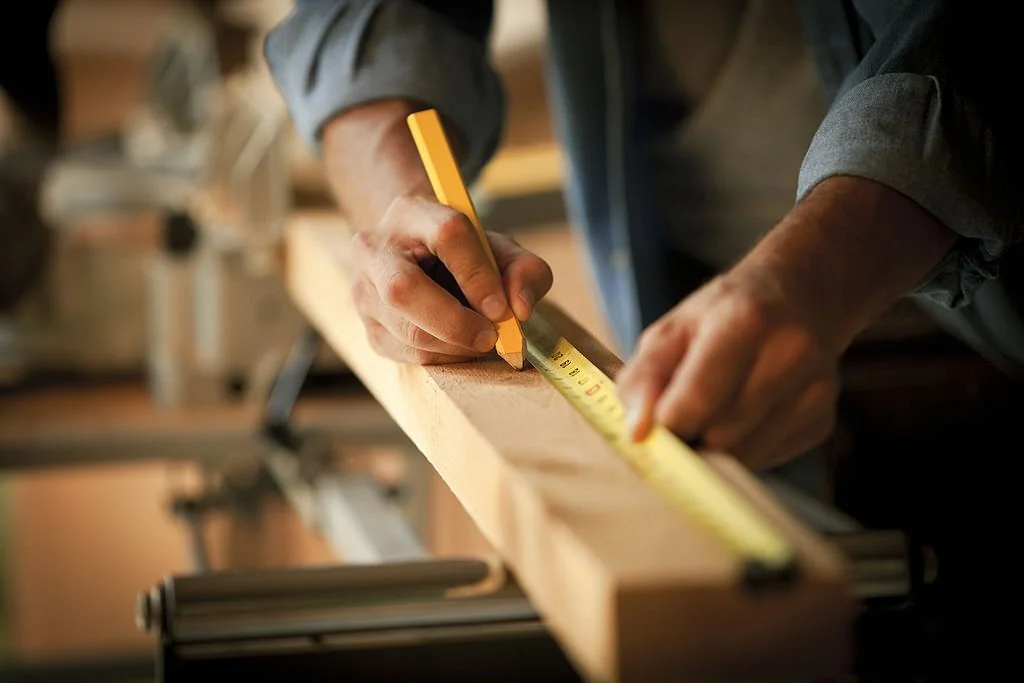
Rolling the sellotape so that the side you’re measuring on is flat on the board also helps. For optimal results, place the pencil tip on the measuring tape at the desired location and then slide it off onto the workpiece.
3. Burn A Circle
The tab at the end of the tape measure may give you erroneous readings if it is an old, worn-out tape measure (like the one below!). Yet, there are still some uses for it.
The term “burning an inch” refers to beginning your sellotape at the 1″ mark rather than the tab “Just keep in mind to take one inch off of your total measurement!
4. Do Not Snap The Tape Back
Rest your finger on the bottom of the sellotape while it is retracting to slow it down.
Prevent the sellotape from slamming back into the housing after you have finished measuring, which may damage the tab and reduce the accuracy of your measurements.
When the tape retracts, take caution not to allow your fingers to come too near to the edges since they are somewhat sharp enough to hurt you.
5. Usage Of The Nail Notch
To achieve an exact measurement from a position in the center of the board, you’ll see that the metal tab has a small slit that may be hooked over the head of a nail or screw.
Just be cautious not to place a nail where the hole would be seen!
Place a nail where you want the circle’s center to go, lock the measuring tape at the required radius, and then spin the housing while holding a pencil in the gap between the tape and the housing to create a rough circle.
How To Take Measurement Of The Interior?
If you just need a rough measurement, you can press the tab against one side and then just bend the sellotape into the other corner, but this won’t give you a precise measurement, and measuring the insides of objects correctly might be tough.
You may locate a measurement that indicates the length of your tape measure’s housing on the side of the device, close to the belt clip.
You may get an accurate reading for the inside of your project by butting the housing up against the wall, noting the measurement on your tape, and multiplying it by the housing’s length.
Last Words
Hope you enjoy the useful information in this article (How To Read A Tape Measure?), and we hope this information will help you.
If you really enjoy the article, don’t forget to share Multiplextimes.com with your friends. Thanks!




